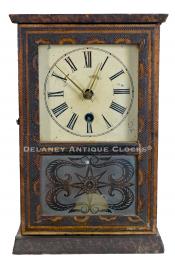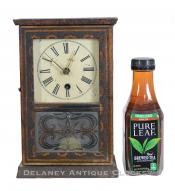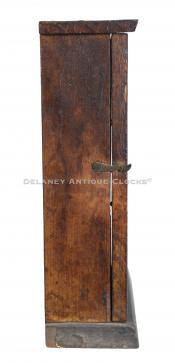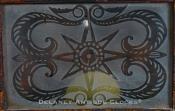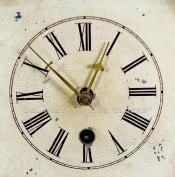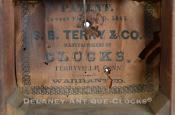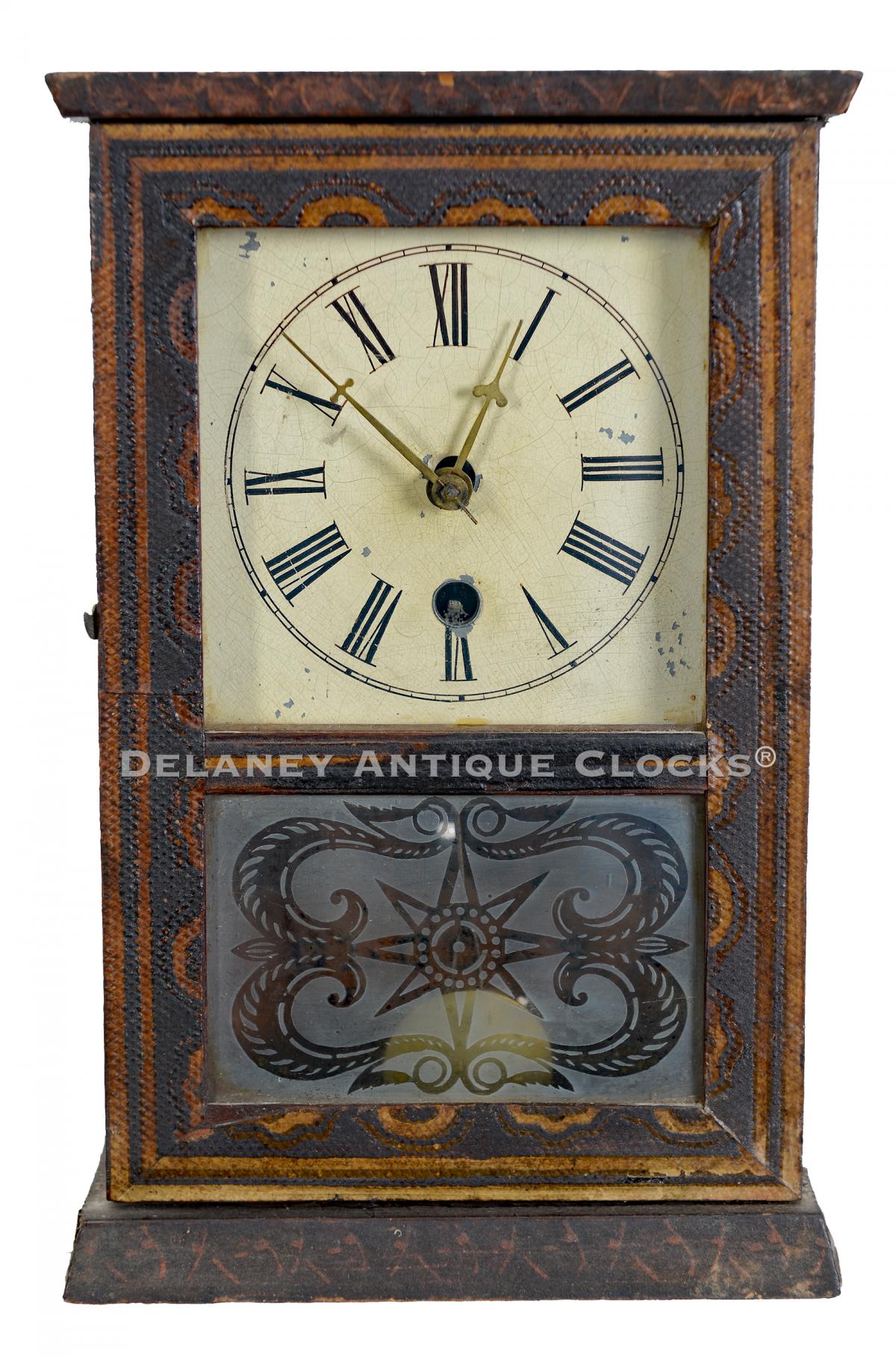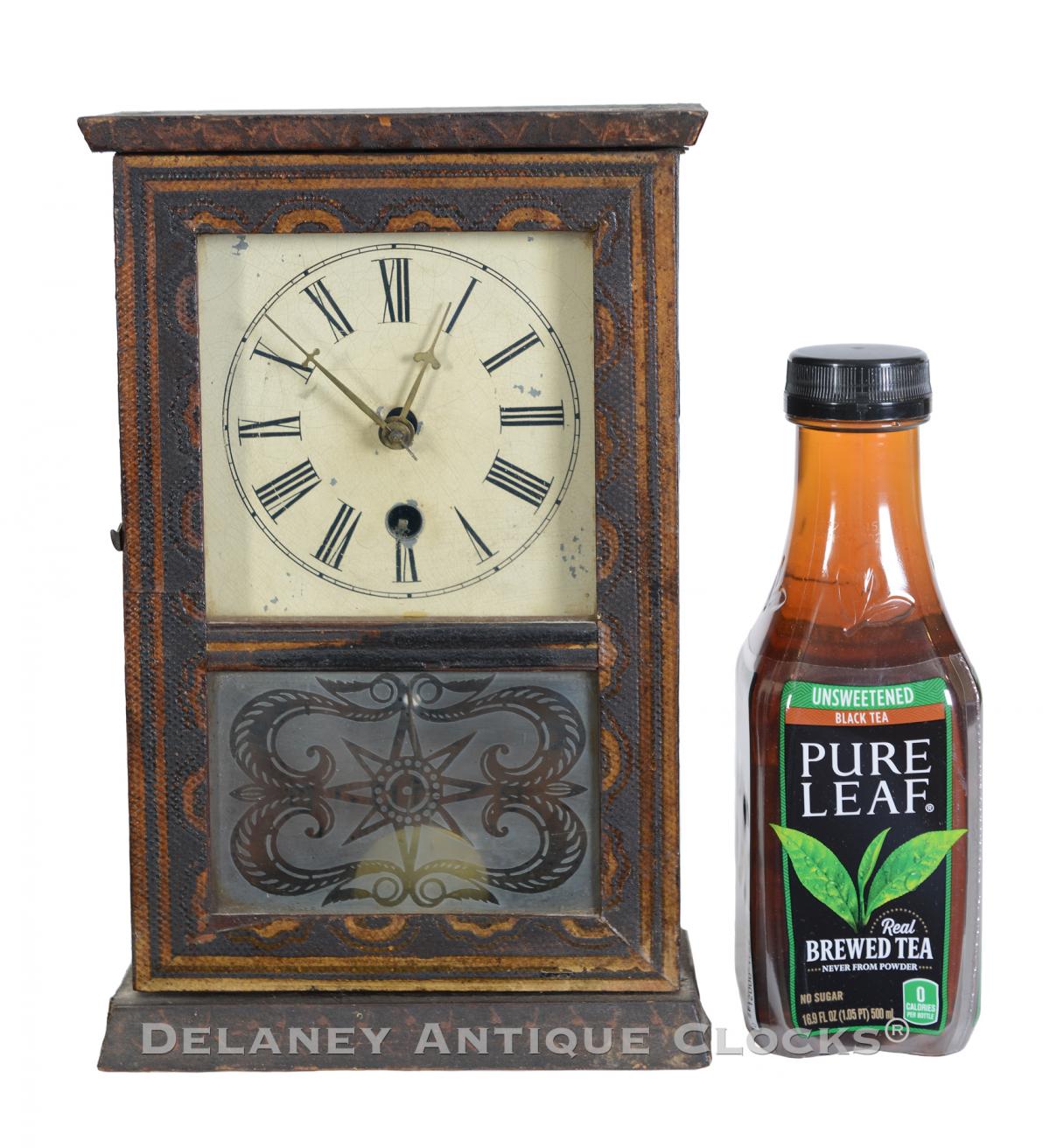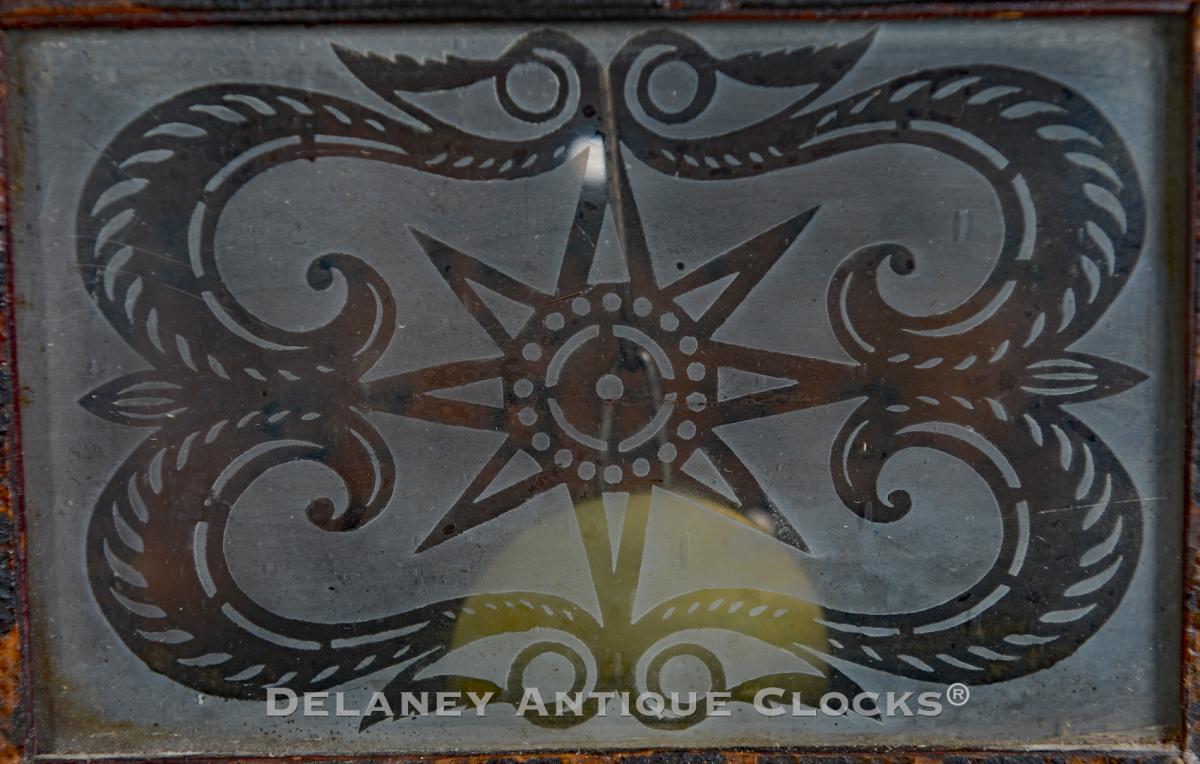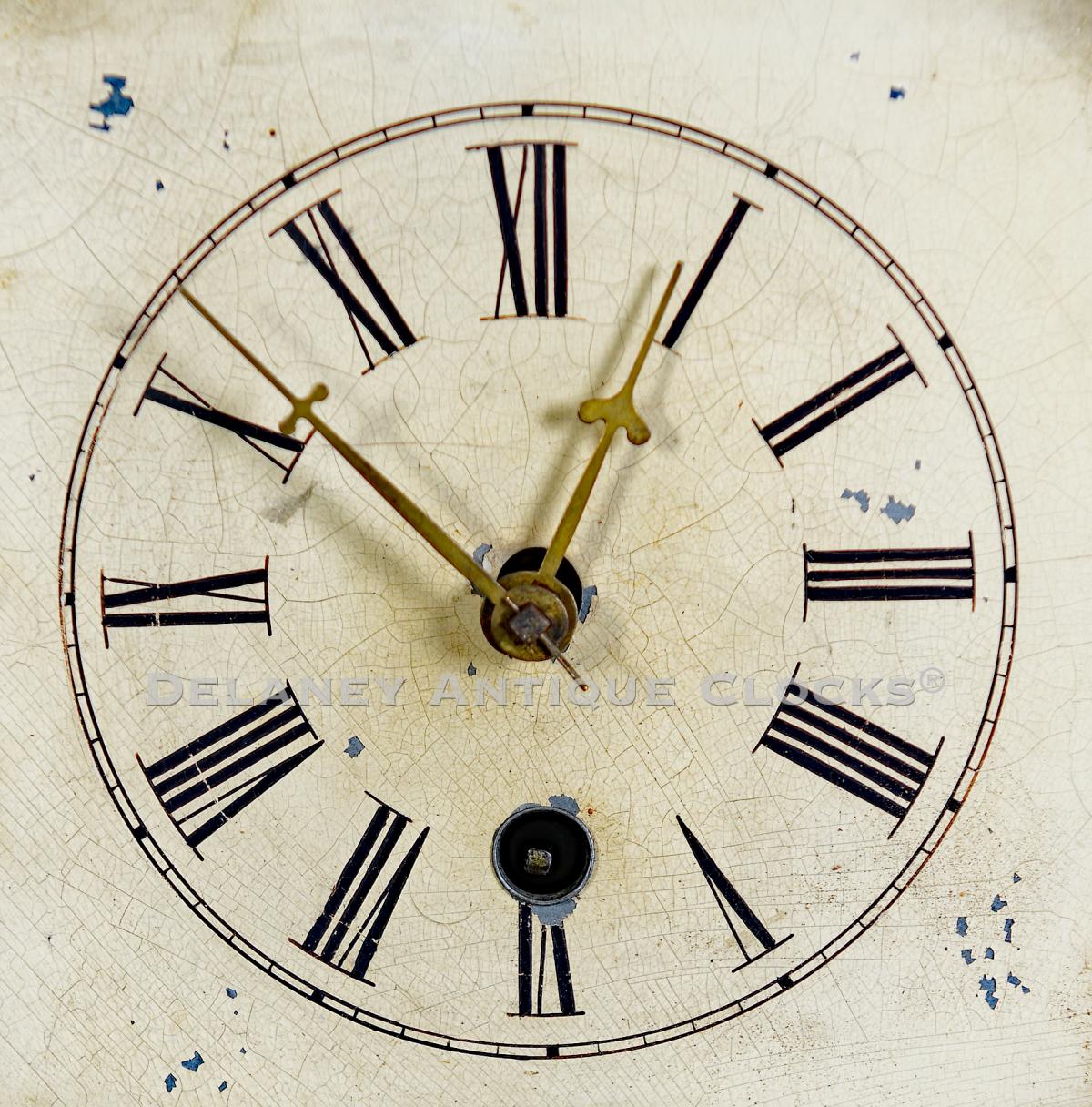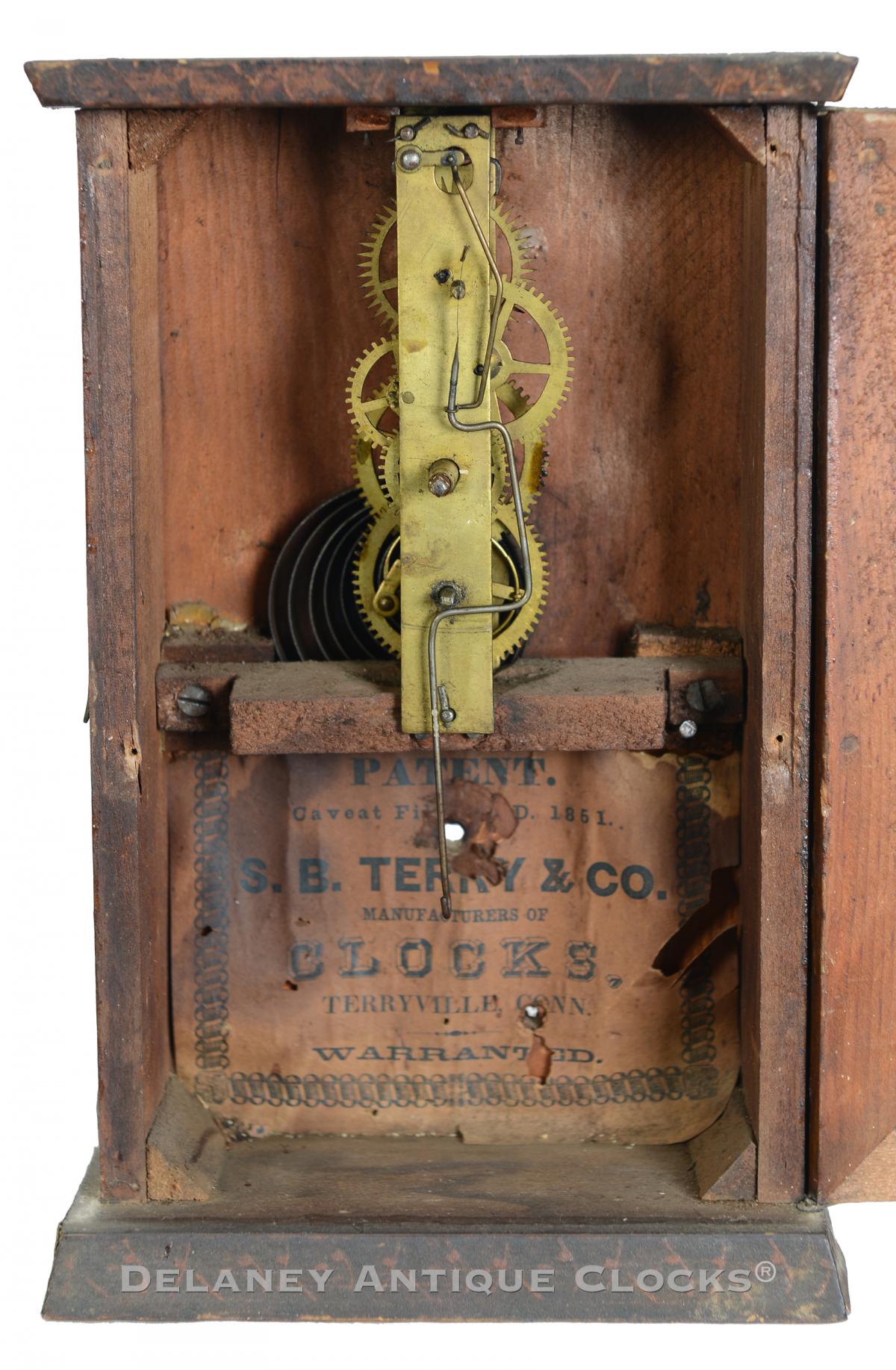Snakeskin cottage clock. Silas Burnham Terry. “Horologist.” Terryville, Connecticut. 223271.
This diminutive shelf clock form is called a “Cottage Clock,” of which the Connecticut clock-making companies manufactured many. What is unusual about this example is the case presentation. This case is decorated with a paper product that resembles a snake skin pattern. Hannah Davis (1784-1863) of Jaffery, New Hampshire, was a pioneer in using wallpaper to decorate storage boxes. She sold numerous bandboxes covered in colorful papers to the women working in the nearby mills. The success of this product may have influenced S.B. Terry when he decorated this model in a pattern resembling a rattlesnake's skin.
The wooden case features a simple construction. The outside surfaces are covered in paper. Several of the facings feature an ornate pattern grained like a rattlesnake's skin. These include the canted edges and the door frame. The top and bottom boards are cut with canted edges that lean towards the main body of the case. The entire front of this clock doubles as a door. This is designed with two panels. Both are fitted with glass. The lower tablet features a lovely acid-etched design that is in excellent condition. The primary feature is a star. This door opens to allow one access to the interior of the clock. It swings to the right on a pair of brass pin hinges.
The dial is painted on tin. Roman-style hour numerals are located inside the segmented minute ring. Two original brass-made hands tell the time. Note the unusual location of the winding arbor. This indicates to the astute collector that this clock has S.B. Terry’s Ladder-type movement.
Behind the dial is the brass-constructed movement. It is called a “ladder movement” because the gearing is arranged in a vertical format. As a result, when you look at the works from the sides, the shafts look like runs on a ladder. The movement is also constructed with the coil power spring mounted on the outside of the back plate. The works are key wound and designed for 30 hours on a full wind.
Pasted inside the case onto the backboard is the Clockmaker’s label. This reads, “PATENT. Caveat (filed, A. D. )1851. / S. B. Terry & CO. / MANUFACTURERS OF / CLOCKS. / FORSETVILLE, CONN. / WARRANTED.” This label is in good original condition. The letters inside the parenthesis are missing due to paper loss.
This clock measures approximately 10.25 inches tall. It was made circa 1860.
Inventory number 223271.
Silas B. Terry was born on February 1, 1807 (during Eli's involvement with the porter contract) and died of a heart attack on May 20, 1876. He was the youngest of eight children born to Eli & Eunice (Warner) Terry. Silas worked in various clockmaking enterprises. Unlike his father, he focused on the more expensive brass-geared clocks and was in the process of producing them as early as December of 1833. He was an inventive person and was constantly testing new designs. One of the most notable was the application of the balance wheel to clock movements. Silas was granted a patent for this on August 9, 1845. Silas was involved with several clockmaking firms, which included the S. B. Terry & Company (1852-1853) and Terryville MFG., Co. (1853-1854). In 1854, Terry went bankrupt and took a job as a general manager of the William L. Gilbert & Company of Winsted, Connecticut. In 1861, he took a job as superintendent of the Waterbury Clock Company. In 1867, he formed the Terry Clock Company in Waterbury with his sons. Silas' early clocks were well made and often had interesting movements. The evidence of his work supports the suggestion that he loved to tinker.

